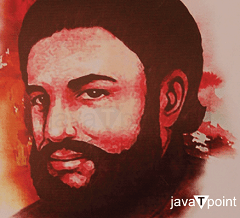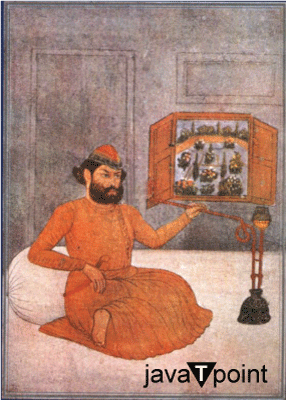Mir Taqi Mir
Mir Taqi Mir (also spelled as Meer Taqi Meer) was a famous Indian Urdu poet who lived in the 18th century. He is one of the well-known Urdu poets of that era and a master in the art of ghazal form. His poetry is a mixup of emotions, life, and truth, with a little sadness. His works are so expressive that everyone can understand the poetry and think or feel like all such things are happening in real-time. He often expressed grief over the downfall of his city, Delhi. This article will provide a comprehensive overview of Mir Taqi's life, including the details about his birth, early life, family, career, and more. Birth and Death DetailsThe real name of Mir Taqi Mir was Mir Muhammad Taqi. Mir Taqi was born and brought up in Akbarabad (now called Agra, India) in 1723. He died in the year 1810 in Lucknow and was buried there. Early LifeThere is very little information available about Mir's life. The main source of information about Mir's life is written in his autobiography, Zikr-e-Mir. Mir Taqi lived a peaceful life, and he was a very private person who didn't like to share his things with anyone. His autobiography book covers the period from childhood to the beginning of his time in Lucknow. However, some say the book does not reveal everything about his life. They say that it is not in chronological order and that some of the information needs to be dated. This means that many of the details of Mir's life are still a mystery. Mir Taqi was born into a middle-class family. His father, Meer Muttaqi, died when Taqi was very young. He faced lots of difficulties after that. His father's stepbrothers snatched all his father's property. So, he moved to his step-uncle's house, and his uncle cared for Taqi. Some years later, he moved to a city called Lucknow, the City of Nawabs, where he spent the rest of his life. Mir spent his early days in Agra. It was named Akbarabad, and the Mughals ruled it at that time. Mir faced lots of difficulties during his childhood. He lost his father at a very early age, and he left Mir with some debt. He had no money or property at that time because his father's stepbrothers took all the things. In his autobiography, he said that he learned many important lessons from his father. He was a religious man with a strong and beautiful mindset who always supported and taught the importance of love and life. These values stayed with Mir throughout his life and influenced his poetry. Mir moved to Delhi a few years later to finish his education and find patrons to help him financially. The Mughal Amir-ul-Umara and Mir Bakhshi, Khan-i Dauran, who was also from Agra, gave him a daily allowance. Some experts believe that two of Mir's long poems, Mu'amlat-e-ishq (The Stages of Love) and Khwab o Khyal-e Mir (Mir's Vision), written in the first person, are based on his early love experiences. However, it needs to be made clear how autobiographical these accounts of a poet's passionate love affair and descent into madness are. Frances W. Pritchett points out that the austere portrait of Mir in his masnavis (a kind of poem written in rhyming couplets) must be contrasted with the picture drawn by Andalib Shadani, who suggests that Mir was a very different poet who was unashamedly erotic in his poetry. In other words, some people think that Mir's masnavis are about his love life, but others believe they are not. There is no way to know for sure, but it is an interesting topic. Life in LucknowMir lived most of his life in Delhi, the capital of the Mughal Empire. He lived in a neighborhood called Kucha Chelan. In 1748, the Afgan Ruler Ahmad Shah Abdali started attacking Delhi and destroying several areas of the city; after this incident, the same things happened over the next few years. Due to the destruction, Mir was very upset, and because of this reason, he moved to Lucknow, the capital of Awadh, at the invitation of the ruler Asaf-ud-Daulah. In 1782, Mir was moved to Lucknow and settled there for the rest of their life; when he visited for the first time in Lucknow, he was genteelly welcomed by the Asaf-ud-Daulah. In Lucknow city, Mir started to write poems about his past life experiences and the experiences of Delhi. He expressed all his feelings and emotions through the help of poetry, and in his poetry, there is a mixup of sadness and anger because of all the things he faced. In the starting days of Lucknow, Mir was a little upset because he found that he was considered an old-thinking person by the courtiers of Lucknow. After all, the concept of the Mir poetry was old-fashioned and did not match the current trends. He wrote poetry about his life experiences, whether romantic, sad, angry, social issues, etc., so the courtiers thought his poetry was old-fashioned and out of touch. Surprisingly, Mir's patron was one of the courtiers who did not like his poetry. This caused tension between them and eventually led to Mir leaving the court. Mir did not like the new Lucknow poetry because he thought they were too romantic and superficial. He believed that poetry should be more serious and meaningful. WritingsMir's complete works, called Kulliaat, are a collection of 6 books with 13,585 poems in different poetic forms, such as ghazals, masnavis, qasidas, rubais, mustards, and satires. 
Mir is best known for his ghazals, which are mostly about love. His massive Mu'amlat-e-Ishq (The Stages of Love) is one of Urdu's greatest love poems. Mir's poetry is often sad because he experienced much loss and hardship. His family died, and he had to deal with other setbacks, such as the traumatic events in Delhi. Mir's poetry is known for its pathos and melancholy. Mir lived in an era when Urdu language and poetry were still developing. He used his natural talent to balance the traditional Indian style and the new Persian influences. He created a new language called Rekhta or Hindui, which was simple, natural, and elegant. His work has influenced many poets who came after him. Mir was inspired to write poetry by a Sayyid from Amroha, who encouraged him to write in Urdu. Urdu was the most widely used language of Hindustan then, and Mir worked hard to become a good Urdu poet. His poetry became well-known and was enjoyed by people of all ages. Mir and Mirza GhalibMir Taqi Mir was a famous Urdu poet who lived in the 18th century. His way of presenting poetry was similar to that of Mirza Sauda, another famous Urdu Poet. He was also compared to Mirza Ghalib, a most famous Urdu poet. Ghalib acknowledged Mir's greatness, saying he was "the lord of poetry". Here are two couplets by Ghalib about Mir:
People who liked Urdu poetry used to debate with him on who was the best and greatest poet, Mir or Ghalib. But there is no comparison between these two poets. Both have their thinking and creativity; everyone will like and love their poetry. In simpler words, Mir Taqi Mir was a great Urdu poet who was compared to Mirza Ghalib. Ghalib himself said that Mir was a genius in his works and deserved respect. Some people prefer Mir's poetry, while others prefer Ghalib's. It is up to the individuals to decide who they like better. DeathMir was very lonely and depressed in his last years. He was sick, and his family had all died. Ultimately, Mir left his body on 21 September 1810. He died due to taking excessive doses of laxative medicine. He died in Lucknow and was buried there. However, the mark of his burial place is now believed to have been removed.
Next Topic#
|
 For Videos Join Our Youtube Channel: Join Now
For Videos Join Our Youtube Channel: Join Now
Feedback
- Send your Feedback to [email protected]
Help Others, Please Share









